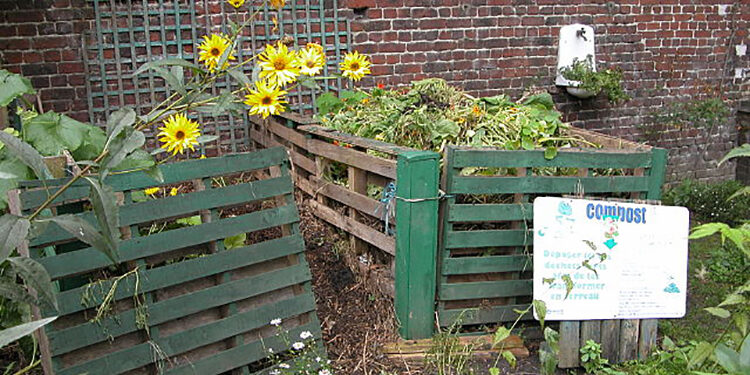While composting is not a difficult activity by any means, it does require a basic understanding of how and why organic materials break down. But learning how to compost at home is simple and super fun! In order to decompose plant matter, microbes and beneficial bacteria need four key ingredients: carbon, nitrogen, water and air.
Carbon is released by what the composting world refers to as “brown” materials. That is, items such as dead leaves, dry twigs, thin cardboard such as toilet paper rolls, paper, wood ash, lint and dust (ex: the contents of your vacuum cleaner bag or dryer). Nitrogen is released by “green” materials. Items such as damp grass clippings, vegetable and fruit waste from the kitchen, coffee grounds and even small chunks of bread are included in the nitrogen family.
To achieve the right balance for composting, your bin should consist of three parts brown carbon to one part green nitrogen. Water should be added as new items are placed in the bin so that the compost remains about as damp as the soil for a healthy house plant. Lastly, air needs to be incorporated with a good turn or two to the pile once you’re done adding to it.
As long as these four ingredients are maintained, you will be rewarded not only with a low-odor to no-odor compost bin, but you’ll also have excellent compost ready for use in a matter of months.
- Choose a location
Picking where to place your compost bin is almost as important as choosing one. Bins should be kept out of direct sun and ideally in a shaded area where excessive rain won’t damage your water balance. It should be placed somewhat away from the house but still near a water source so you can easily add water when the bin becomes too dry or as you add new compost.
Choosing a bin depends on how much you want to spend and how much time you want to put into the project. A Free bin can be built from just about anything as long as it’s between three feet and five feet square, is ventilated and allows for removal of soil from the bottom of the pile. From old garbage pails with lids to cylinders of chicken wire held in place with stakes, compost bins are very versatile regarding shape and style. Just remember that if you’re building a compost bin, the measurement of between three and five feet is important to maintain as compost becomes difficult to aerate if the pile’s too big, and a small pile might not reach the ideal internal temperatures of between 130 and 165 degrees Fahrenheit.
- Regular maintenance
It might not seem like your compost pile is alive, but it’s teeming with living organisms that need food, water and air just like everybody else. From the bacteria that start the break down process to the microbes munching away at the organic matter and even the fungus, worms and beetles that move in later on, all of these creatures need the basics of life in order to survive. If you aren’t adding new items to the bin every few days, remember to aerate the compost at least once a week and check it for moisture. As long as the compost is slightly damp, it’s fine.
Compost bins also should not have a very strong odor. As long as the 3 to 1 ratio is being maintained and the soil is being turned, it should smell little if at all. If, however, you find that your bin has a strong rotten egg odor to it, start turning the pile on a more frequent basis and add more brown items as the bin may be getting too little air and too much moisture. If it smells more like ammonia, add more brown carbon products as the nitrogen content is probably too high.
Lastly, items that you should avoid adding to your compost bin include bones, oils, fats, milk products, metal or glass materials, soiled diapers, pet waste, treated or painted wood, chemically treated yard waste, meat, coal and coal ash, and plastic. Even if the plastic product says “compostable,” chances are that your home composting pile won’t be able to reach the temperatures required to break down sturdy plastics such as utensils and hardy serving ware.
- Remove the ready product
You’ll be able to tell when your compost is ready for use by its appearance and smell. Useable compost should have a rich, dark color and contain no un-composted materials. The smell should be earthy and clean. If you’re using a compost bin that does not spin, the compost can be harvested from the bottom of the bin after about two to six months. If you have a spinning compost bin, stop adding compost materials when full and remember to spin it and check for moisture for about two to six months. Though you can’t use the container for that period of time, you will be able to use the entire contents once ready.
Guest blogger, Tim Eyre works with customers on behalf of www.extraspace.com, helping them with their self storage needs. Tim also writes on self storage, recycling, energy conservation and other topics at blog.extraspace.com.



